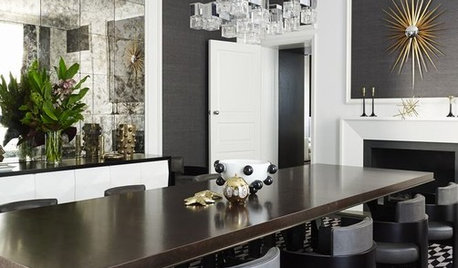Nervous about Light Situation Need Some Advice Please!
fairyskyla
19 years ago
Related Stories

LIFEGet the Family to Pitch In: A Mom’s Advice on Chores
Foster teamwork and a sense of ownership about housekeeping to lighten your load and even boost togetherness
Full Story
REMODELING GUIDESContractor Tips: Advice for Laundry Room Design
Thinking ahead when installing or moving a washer and dryer can prevent frustration and damage down the road
Full Story
GREEN BUILDINGLet’s Clear Up Some Confusion About Solar Panels
Different panel types do different things. If you want solar energy for your home, get the basics here first
Full Story
KITCHEN DESIGNSmart Investments in Kitchen Cabinetry — a Realtor's Advice
Get expert info on what cabinet features are worth the money, for both you and potential buyers of your home
Full Story
TASTEMAKERSBook to Know: Design Advice in Greg Natale’s ‘The Tailored Interior’
The interior designer shares the 9 steps he uses to create cohesive, pleasing rooms
Full Story
BATHROOM DESIGNDreaming of a Spa Tub at Home? Read This Pro Advice First
Before you float away on visions of jets and bubbles and the steamiest water around, consider these very real spa tub issues
Full Story
GREAT HOME PROJECTSWhat to Know About Adding a Reclaimed-Wood Wall
Here’s advice on where to put it, how to find and select wood, what it might cost and how to get it done
Full Story
DECORATING GUIDESDitch the Rules but Keep Some Tools
Be fearless, but follow some basic decorating strategies to achieve the best results
Full Story
EXTERIORSCurb Appeal Feeling a Little Off? Some Questions to Consider
Color, scale, proportion, trim ... 14 things to think about if your exterior is bugging you
Full Story
HOME OFFICESQuiet, Please! How to Cut Noise Pollution at Home
Leaf blowers, trucks or noisy neighbors driving you berserk? These sound-reduction strategies can help you hush things up
Full Story





kdjoergensen
fairyskylaOriginal Author
Related Professionals
Danbury Landscape Architects & Landscape Designers · Tomball Landscape Architects & Landscape Designers · Jackson Landscape Contractors · New Brighton Landscape Contractors · North Richland Hills Landscape Contractors · Saint George Landscape Contractors · San Bruno Landscape Contractors · Wareham Landscape Contractors · Wilton Landscape Contractors · Northlake Landscape Contractors · Hull Fence Contractors · Huntington Beach Fence Contractors · Laguna Hills Fence Contractors · Ponte Vedra Beach Fence Contractors · Robbinsdale Roofing & Guttersgawdly
shrubs_n_bulbs
fairyskylaOriginal Author
jkirk3279